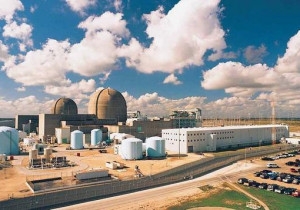【格力电器(000651)】Why we believe cash dividend will continue to disappoint the market
2018.09.18 08:00
格力电器(000651)
Distributors’ liquidity likely at critical level; cut DPS forecasts to belowconsensus
A common belief by investors is that Gree will eventually increase the cashdividend payout, to gradually distribute the significant net cash on its book(RMB13.5 per share as of 1H18). In this report, we argue that such is very unlikelyin the next 3 years in our view, due to: (1) Gree’s increased lending to distributorsto maintain their liquidity and (2) Gree may hold significant interbank assets. Wecut our cash DPS (dividend per share) forecasts in 2019/20 by 21%/24% to RMB1.9/1.9 (23%/29% lower than Bloomberg Finance LP consensus).
Gree’s surging financing to distributors hinting deteriorating liquidity in thechannel, and poor revenue ahead
In 1H18, Gree’s “financing to distributors” reached a new high since2014 ( pre-inventory crisis): we calculate Gree’s financing to distributors(see the third bullet point for definition) has reached RMB45bn in 1H18, up45% YoY. Based on a study on the 2015 inventory cycle, a sharp increasein financing to distributors tends to mean worsened distributor liquidity.As a result, distributor orders (sales) in the subsequent year tend to bepoor (Figure 1 and 2).
Outlook: we forecast Gree to increase its financing to distributorsfurther, and such may lead to accelerated cash out flow while curbingmanagement’s incentive to increase cash dividend payout.
Financing to distributors: an indicator designed for AC (air conditioner)brands: for most wholesale consumer companies, accounts receivableserves as the main funding source to distributors. However, the case ofAC (Gree and Midea) is more complicated, due to: (1) AC brands collectcash from distributors before shipping products, thus holding a liability(advance from customers), instead of assets (accounts receivable), (2)Gree and Midea have accelerated their lending to distributors. Tocope with the increased complexity, we define an indicator “financingto distributors” (accounts receivable plus loan to distributors minusadvance from customers).
Close to 40% of Gree’s cash on book is actually interbank
Interbank asset has became a major component in Gree’s cash, andincreasing: in 1H18, 37% of Gree’s cash on book is interbank asset while4% being deposit at PBOC. We expect interbank asset as a percentage of total cash to further increase (Figure 5). We do not expect Gree todistribute its interbank to investors as Gree may need the interestrevenue to propel earnings growth. Historically, Gree has a tendency toincrease interbank asset as market liquidity is tight (to enjoy the interestrevenue) (Figure 3 & 4).
Gree’s interest yield on interbank asset has been much higher thanthe big banks: interestingly, Gree generated a 4.2% annualized rateon its interbank asset during 1H18, much higher than China’s biggestcommercial banks (Figure 7). We note that Gree’s asset yield frominterbank has been consistently higher than the big banks, by a significantspread of 100bps (2014 to 1H18 average).
How does Gree generate such a high yield on interbank asset? weestimate that, in addition to participate in the ordinary interbank market,Gree may have been lending to smaller banks and/or trust companiesthat can “channel” the fund to specific third parties, including Gree’sdistributors.
申明:本文为作者投稿或转载,在概念股网 http://www.gainiangu.com/ 上发表,为其独立观点。不代表本网立场,不代表本网赞同其观点,亦不对其真实性负责,投资决策请建立在独立思考之上。







